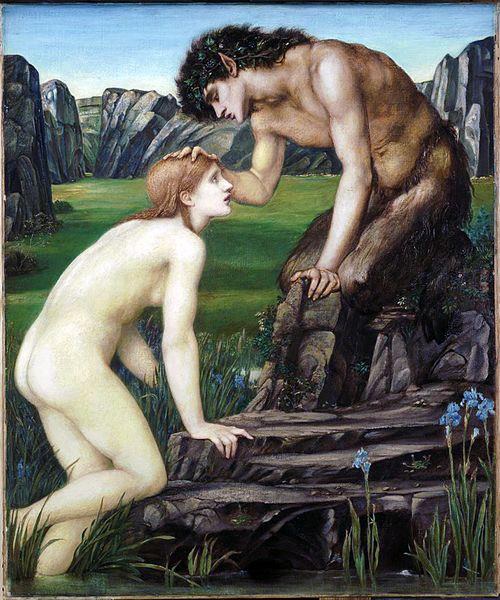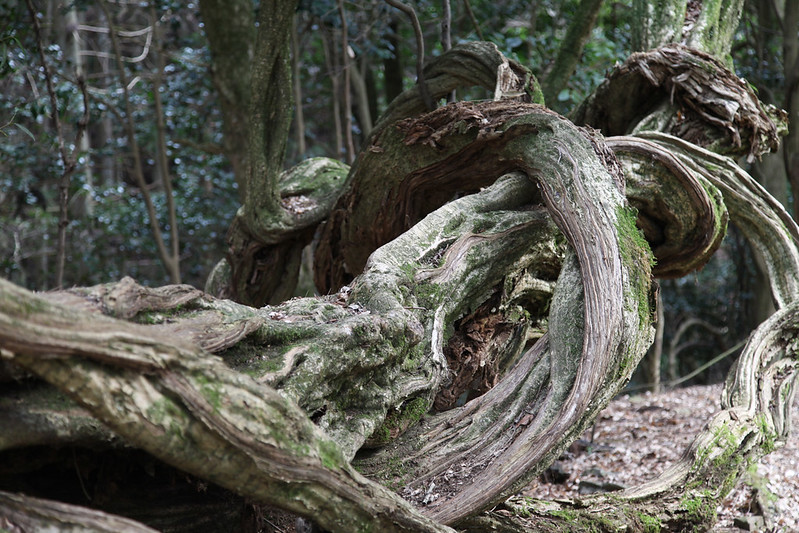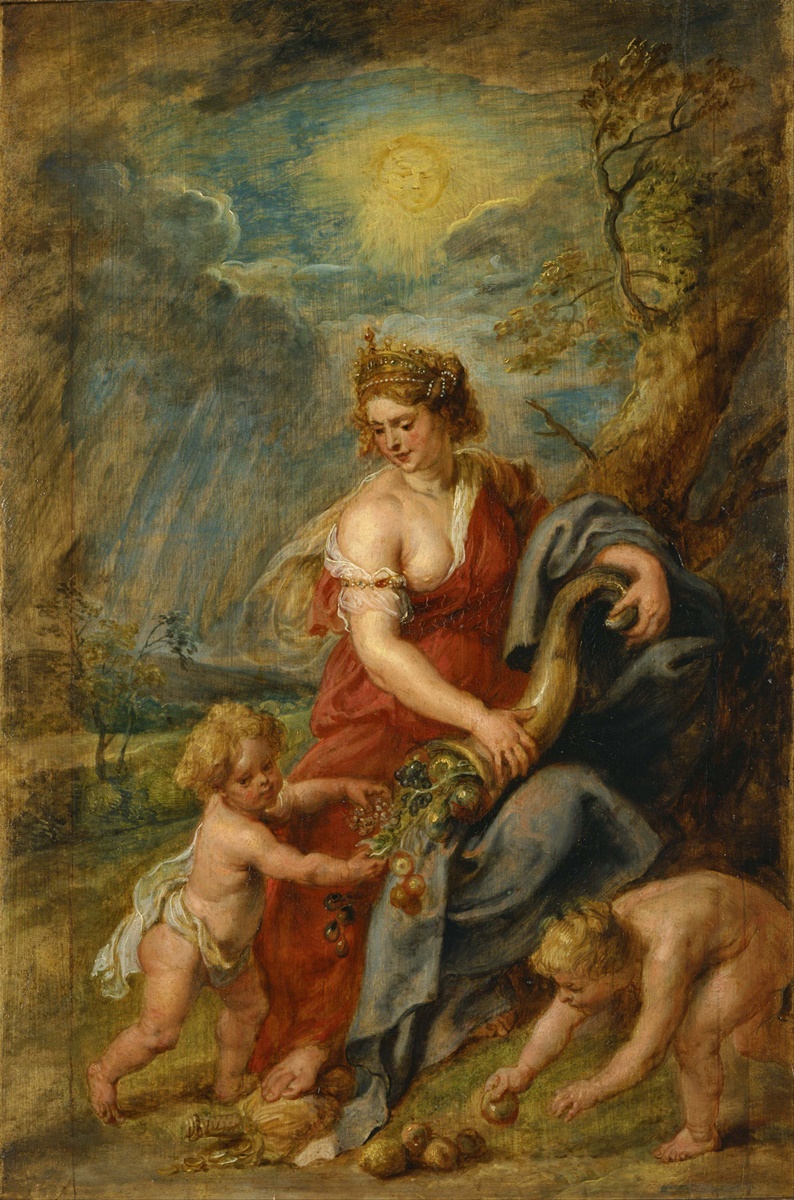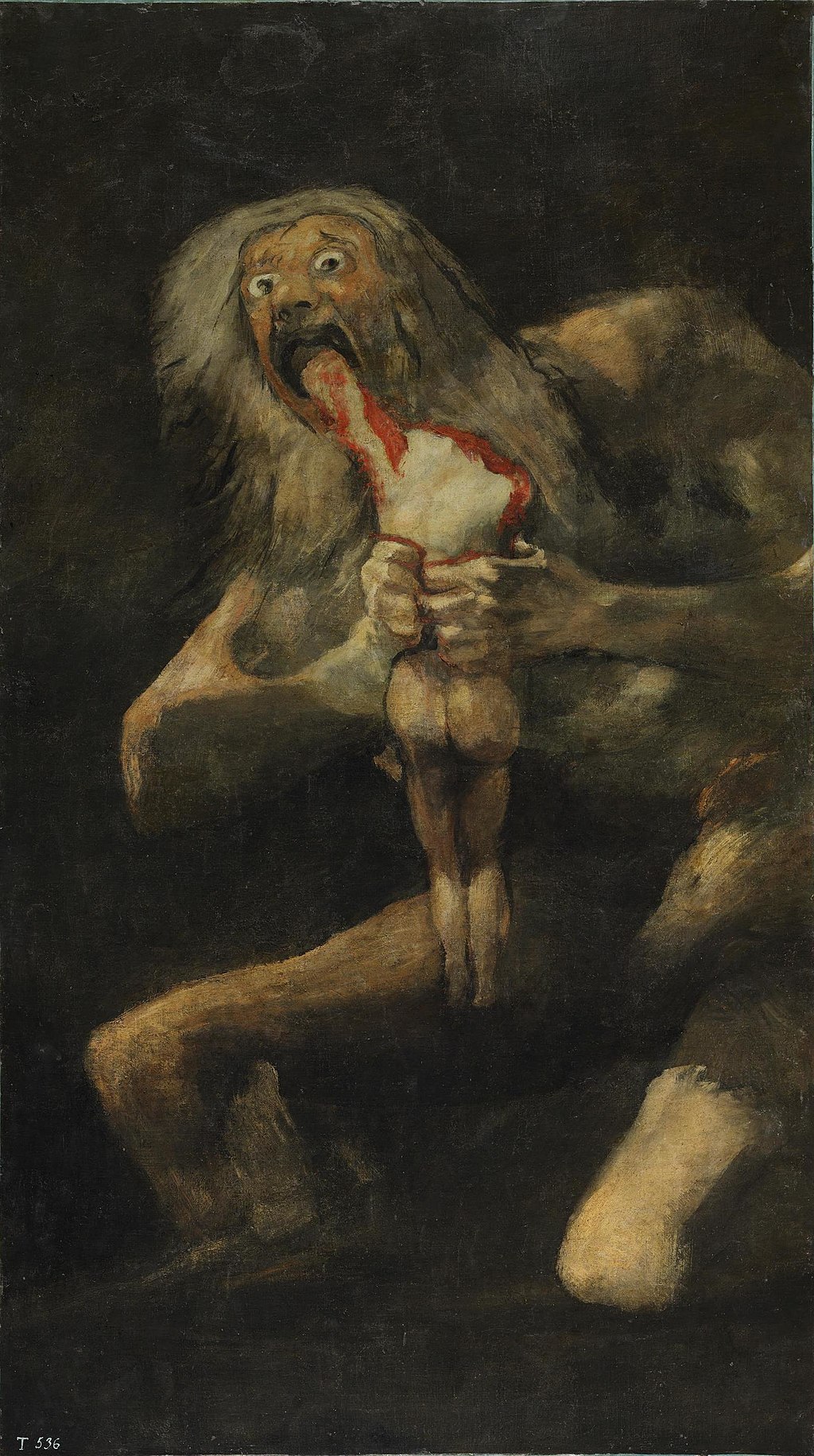パンとパンデミック: 山羊座時代の愛(1)
ブライアン・クラーク著 咲耶まゆみ訳
By Brian Clark Translated by Mayumi Sakuya
English text to follow.
パンデミック(pandemic)という言葉は、パン(pan「全て」)とデモス(dēmos「人々」)の2つの古代の言葉から成り立っている。ギリシャ語のpandēmosが語源だ。パンデミックは全ての人々という意味を含む。最初にこの言葉が形容詞として使われのは17世紀半ばだ。この言葉が使われた時は、私たち全員が同じであり、全員が同じ旅路にあり、全員が同じ勢力の影響を受けることを思い出させた。
コロナウィルスはパンデミック(=感染症の世界的大流行)だ。この言葉は世界を脅かすことから不安感を喚起する。生命と暮らしが危険にさらされる。本能に駆られてパニックになる。
このパニック(pan-ic)という言葉に自分の名前を貸してくれたのは、偉大な神パンだ。なぜなら彼の存在に畏怖を抱くと、恐怖や不安感が喚起されたからだ。パンの並外れた大声や山羊足の神の姿を想像するだけで古代人を不安にさせ、パニックを引き起こした。想像物が心理になっていった。パンは多神教徒の力やあらゆる美や残忍性を有する自然の元型集合体の権化だ。パンに敬意を表し、汎神論的(pantheistic)になるということは自然界に住む神々を認めることだ。
パンは私が知っている、死んだとかつて報告されたことのある唯一のギリシャ神だ。紀元後1世紀にプルタルコス(帝政ローマのギリシャ人著述家)が「神託の堕落(“The Obsolescence of Oracles” )」の中で、「船員タムスがギリシャ西海岸で船の舵取りをしていると、メッセージを大声で叫ぶ不思議な声を耳にした」と記述している。タムスは声に言われた通りに「大いなる神パンは死したり」と宣告し、その知らせはローマのティベリウス帝国中にたちまち知れ渡った。キリスト教徒たちはこれを多神教時代の終焉、あらゆる汎神教と自然神の絶滅と解釈した。新体制下ではパンのイメージは悪魔の描写に使われた。「大いなる神パンは死せり」は制度崩壊、サイクルの底、あるいは時代の終焉を象徴するようになった。それについては後で詳説するが、ここで怖れに対する私たちの本能的な反応の中で生き生きとしているパンを紹介しよう。
ギリシャ神話には無数のパンの家系図がある中で、最も知られているパンのDNAは、ホメロスの叙事詩に謳われているヘルメスとドライパだ。「山羊足と2本の角を持つ息子」を出産したドライパはパニックに陥り、逃げ出し、息子を放棄した。一方息子を誇りに思ったヘルメスは、他の神々に見せるためにオリンポスまで赤ちゃんを抱きかかえて運んだ。「全ての神々の心を楽しませたので、神々はギリシア語で『全て』を意味するパンという名前を与えた(古代ギリシャ叙事詩「ホメロス風賛歌」より)」。神々は神聖な家族の一員としてパンを迎え入れた。神として、元型として、パンは私たちの心理領域に吹き込まれている。しかし自然領域からこの神を妨げると、つまり森林略奪や動物虐待をする度に、自然環境を汚染する度に、パンは汚される。
パンとパンデミック
ではパンとパンデミックとどのような関係があるのだろうか? まあ、以下を除いては多くの関係はないだろう。それは神話やその住人は思考の仕方を緩め、シンボルは新しい想像や視点へ導いていくことを許すということ。パンに対する見方を変えると、彼の轟きわたる声も怖くなくなるし、彼の顔も不快に思わなくなる。象徴は明確にしたり、説明するためにあるのではなく、私たちを神秘に引き込むために存在する。
例えば「The Homeric Hymn to Pan(パンに捧げるホメロス風賛歌)」は19篇だ。コビット19と同じ連番だ!コロナウィルスは動物から人に感染し、コウモリからパンゴリン(pangolin、センザンコウ)、そして人に伝染したと報告されている。パンゴリンはマレー語由来であるものの、皮肉にもここでもまたパンが登場する。これに対して意味付けをするつもりはないが、象徴世界を探求する時は、シンクロニシティに富むことに気づく。リニアリティ(直線性)や文字通りの意味はもはや時系列も因果関係も形成することはない。イメージや、思い、感覚、感情を通して明らかになるのあって、統計やファクトを通してではない。神々が畏敬する神聖な空間、神秘の中に入ることができる。しかし、それは俗界では株価乱高下、買い占め、世界滅亡の日や考えの甘い予測などでパニックを引き起こす。
では、パンデミックの渦中時ではどのようにパンを考察したらよいだろう。パンは自然だ。美しくもあり、危険でもある。パンが死ぬと自然も死ぬ。神々が死ぬことはないが、立ち退かされたり、否定されたり、沈黙させられることがある。木々、動物、石、丘の上、渓谷は神々に割り当てられる。自然は単純に神のようなものではなく、神そのものだ。
自然はパンだ。全ての木々、全ての動物、全ての石、全ての私たち。ジェームズ・ヒルマンが強調したように、パンはまだ生きている。パンがいなくなると魂は苦しみ、心が不安になる。半人半羊のパンは本能的で、文明化していない心象的人物だ。
パンデミックは私たちを自然に回帰させる。飛行機は飛ばず、空気汚染は減少し、鳥がさえずる。パンデミックはまた私たちを孤立させ、静寂と平穏へ招く。パンがいなくなると商業的で自然のない世界で迷子になってしまう。
パン、山羊座、悪魔(前半)
山羊座は「old goat(年老いた山羊)」であることは間違いないが、角のある山羊かシーゴート(海羊)の星座山羊座は紀元前2000年にも認識されていた。ペルシャ、シリア、ヒンズーでは羊として知られていたが、バビロニア人は海羊とみていた。紀元前7世紀頃にアッシリア人は魚羊のイメージを星座に重ねたと同時にアルカディア人羊飼いたちは神パンの物語を語った。ギリシャ人は星のイメージを、角を持つ羊神パンの神話と関連付けた。神話のパンは怪物タイフォンを恐れ、海羊に化けて海に飛び込んだ。
また、ギリシャ人はパンの姉妹のアマルティアを通して山羊座と神話の繋がりを見出した。アマルティアは、ゼウスが父親のタイタンの王者クロヌスから身を潜めている間、幼いゼウスを育てた。ゼウスは感謝の印としてアマルティアを山羊座の星座として天空で永遠の命を与え、彼女の角に果物で満たした。この豊かさの象徴はコルヌピア、豊穣の角だった。このサインを裏打ちする象徴だ。恩寵豊かな代理母アマルティアは我が子を貪り食うクロヌスの正反対を象徴する。クロヌスはサタンの前身で、占星学の世界では山羊座を支配する。
またもう一つの山羊座のルーラー土星の抑圧的な側面は、この星座の神話が示す権威者コンプレックスの厳格さと不安感を露出する。山羊座の中で私たちはパンの本能的衝動と、脅迫的で未知に感じるものに対して権力を振りかざそうとする土星の貪欲で支配的な側面の間の分裂と向き合う。山羊座は傷つきやすくも完璧さを求めるが、成功、秀逸性、達成は魂によってではなく、コンセンサスや企業幹部によって計測されることがあまりにも多い。大衆の完璧さへの欲求と個人的に感じる失敗、不安、パニックが集積される。パンは「全て」に私たちを回帰させる。自然界保護に対する私たちの共通責任や目標は何であろう?
ギリシャ神話では古い秩序の執権であるクロヌスと、クロヌスの息子であり、光の使者であり、新時代を先導する神ゼウスは敵同士だ。山羊座では2通りの対立が起こる場合が多い。父親のやり方対息子のやり方。あるいはリーダーのやり方対一般市民のやり方、または社会生活対個人生活かもしれない。山羊座は対立、あるいは怖れと不安感を通して支配しようとする従来のやり方を持つ権威的統治者との戦いを通して勝ち取る自律と自立の象徴だ。
タロットでは、古い秩序は個人を奴隷にする恐ろしく限定されたパターンを象徴する悪魔だ。希望や理由がなくなると個人は悪魔の物質主義と欲求の有形世界で構築された限定的な現実に囚われてしまう。進歩と変化を恐れる悪魔は自分自身の創造性や可能性を可能性や選択肢のない世界に監禁する。もしかしたらパンデミックは私たちが否定しているパンと悪魔を認めることを教えてくれるのかもしれない。
続く
パンとパンデミック:山羊座時代の愛(2)はこちら → ★
これは抜粋翻訳記事です。全原文はこちら → ★
ブライアン・クラーク先生の過去の講座はこちら → スマートフォン講座
ブライアン・クラーク先生の書籍はこちら → 書籍物品販売
Pan and the Pandemic: Love in the Time of Capricorn (1)
by Brian Clark
Our word pandemic arises from the Greek pandēmos, formed from the two ancient words pan, meaning ‘all’ and dēmos, meaning ‘people‘. Pandemic implies all people. It was first used in the mid 17th C as an adjective. When used, it reminds us that we are all the same, all on the same journey and all susceptible to the same forces.
Corona Virus is a pandemic disease; the very sound of the word evokes anxiety as it threatens our world. Lives and livelihoods are at risk. We are gripped by the instinct to panic.
It was the great god Pan who lent his name to our word pan-ic, as when frightened by his presence, a state of fear and anxiety was evoked. Imagining his exceptionally loud voice or the mere sight of the goat-footed god alarmed the ancients. Imagining the presence of the god could invoke panic. What was imaginal became physiological. Pan personified the archetypal constellation of pagan power and Nature in all its beauty and in all its savagery. Honouring Pan, being pantheistic, acknowledges the gods who dwell in the natural world.
Pan is the only Greek god I know of who was reported to have died. In the first Century AD, Plutarch gave an account of a sailor Thamus hearing a mysterious voice shouting out a message as he steered his ship along the western coast of Greece. As instructed, Thamus proclaimed that the great god Pan was dead and the news spread fast throughout Tiberius’ Roman Empire. The Christians interpreted this to mean an end to the pagan era, the demise of all pagan and Nature gods. Under the new regime his image was used to characterize the Devil. ‘Great Pan is dead’ has come to symbolize institutional collapse, the nadir of a cycle or the end of an era – more on that later. For now, let’s meet Pan the god animated in our instinctual responses to fear.
In Greek myth we will find numerous genealogies for Pan. Of the many, perhaps Pan’s most commonly known DNA is from the union of Hermes and Dryope, as told in the Homeric Hymn to Pan. Dryope, after giving birth to her ‘goat-hooved, two-horned son’, panicked. As soon as she saw his fierce face ‘covered with beard’, she fled, abandoning her son. Proud of his son, Hermes clasped the newborn in his arms and carried him to Olympus to show the other gods, who were all pleased; hence, named him Pan: ‘And Pan was the name they gave him for pleasing the hearts of them all.’(iii) The immortals welcomed Pan as part of their divine family. As god, as archetype, Pan is ensouled on our psychic terrain. But by prohibiting this god from our natural terrain, the divine Pan is dishonoured every time we plunder the forests, every time we maltreat an animal, every time we pollute the natural environs.
Pan and the Pandemic
What might Pan have to do with pandemic? Well, probably not a lot, except that myth and its inhabitants loosen a way of thinking, allowing symbols to take us to new ways of imagining and perceiving. With alternate ways to think of Pan, we may be less terrified of his booming voice or not as repulsed by his face. The presence of symbol is not to clarify or to explain, but to engage us in mystery.
For instance The Homeric Hymn to Pan is Hymn 19, the same serial number as Covid 19! It has been reported that the transfer of the virus from animal to human may have been passed from bat to pangolin to human. Ironic that Pan, even though the word pangolin originates in Malay, shows up again. I make no meaning of this except to recognize that when researching the symbolic world, synchronicities abound, as we enter through a portal to a world where linearity and literality no longer form timelines, nor causal relationships. They reveal through images, thoughts, senses, feelings, not statistics or facts. We are in mystery, the sacred space revered by gods, but which often causes panic in the secular world, such as the stock market roller coaster ride, panic buying, doomsday or naive predictions.
How might we think of Pan in midst of the Pandemic? Pan is nature, both beautiful and treacherous. With Pan dead, so too is Nature. Gods do not die, but they can be dislocated, denied and silenced. While trees, animals, rocks, hilltops and valleys may be assigned to a God, they are Nature’s deities and speak through all the spirits of nature whether embodied by dryads, devas, elementals, nymphs or satyrs. Nature is not just godlike, it is God.
Nature is Pan, all the trees, all the animals, all the stones – all of us. Gods do not die, yet they can be repressed. As James Hillman emphasized, Pan still lives. Without Pan the soul suffers, the mind is anxious. A hybrid, a goat-man, Pan is an imaginal figure who is instinctual, not civilized.
Pandemic returns us to Nature. Planes are not flying, air pollution is decreasing, birds are singing. Pandemic also isolates us, inviting us to return to quiet and stillness, lost in our mechanistic, natureless world without Pan.
Pan, Capricorn & the Devil (First half)
No doubt Capricorn is an ‘old goat’, as the zodiacal constellation of either a horned goat or a sea goat, was recognised as early as the second millennium BCE. While known as a goat to the Persians, Syrians, and Hindus, the Babylonians identified it as a goat-fish. It may have been the Assyrians who first superimposed the image of the goat-fish onto the constellation about mid 7th Century BCE around the same time that the Arcadian shepherds told stories of their god Pan.
The Greeks found a correlation to the stellar image in their myths of the horned goat-god Pan who, when frightened by the monster Typhon, jumped into the sea and transformed himself into a sea goat.
The Greeks made another mythic connection to the constellation through Amaltheia, Pan’s sister. Amaltheia was the goat-nymph who nursed the young Zeus when he was concealed from his father Cronus, the Titan king. Grateful, Zeus immortalized Amaltheia in the heavens as the constellation of Capricorn. Zeus took one of her horns and filled it with the fruits of the harvest. This plentiful symbol was the Cornucopia, the Horn of Plenty, an emblem reminding us of the abundant resources underpinning this sign. As a bountiful mother substitute, Amaltheia constellates the polar opposite to Cronus, the devouring father. Cronus is the predecessor of Saturn, the deity who astrologically rules Capricorn.
The oppressive side of Saturn, ruler of Capricorn, exposes the rigidity and anxiety of the authority complex that underscores the myth of this constellation. In Capricorn we are confronted with the split between Pan’s instinctual drives and Saturn’s devouring and controlling aspects that attempt to exert power over what feels compulsive and unknown. An obsession for perfection has no room for Pan. Capricorn is vulnerable to striving for perfection. But success, excellence and accomplishment are too often measured in terms of consensus and corporate directives, not the soul. In the split between the public need for perfection and the private sense of failure, anxiety and pan-ic can become constellated. Pan returns us to ‘All’; what are our communal responsibilities and objectives for caretaking our natural world?
In the myth we are reminded that Cronus, as the regent of the old order, and his son Zeus, the light bringer and leading god of the new era, are adversaries. In Capricorn a collision between these two ways often occurs; the way of the father versus the way of the son, or the way of the leader versus the way of the people; perhaps the public life versus the private life. Capricorn is a symbol of autonomy and self-reliance won through the confrontation, perhaps battle, with the authoritative ruler of the old way, who controls through fear and uncertainty.
In the Tarot the old order is the Devil symbolizing the fearful and limited patterns that enslave the individual. Without hope or reason the individual is bound by a limited reality constructed out of the Devil’s concrete world of materialism and desire. Fearful of progress and change the Devil imprisons his own creativity and potentialities in a world that offers no possibilities or choices. Perhaps pandemic reminds us to acknowledge Pan and the devils we deny.(viii)
Continue.
(iii) The Homeric Hymn to Pan (Hymn 19) from The Homeric Hymns, translated by Michael Crudden, Oxford University Press, Oxford: 2001.
(viii) Of interest is a beloved childhood character, Peter Pan, who took the goat god’s name. Disney’s characterization excluded the darker tones that underlay the original character
created by James Matthew Barrie.
Click here for the “Pan and Pandemic: Love in the Time of Capricorn (2) → ★
Click here for the full English original article.→★
関連記事
- 土星-天王星のサイクル: 2021年のウエイニング・スクエアに関する考察 (Part 2)
- 土星-天王星のサイクル: 2021年のウエイニング・スクエアに関する考察 (Part 1)
- パンとパンデミック:山羊座時代の愛(1) Pan and the Pandemic(1)
- パンとパンデミック:山羊座時代の愛(2) Pan and the Pandemic(2)
- 親密な関係 – 8ハウス Intimacy – The Eighth House(Part 1)
- 親密な関係 – 8ハウス Intimacy – The Eighth House(Part 2)
- ヘスティアとともにある家(ホーム) At Home with Hestia
- 夢 Dream(1)
- 夢 Dream(2)
- 夢 Dream(3)
Submit your review | |





